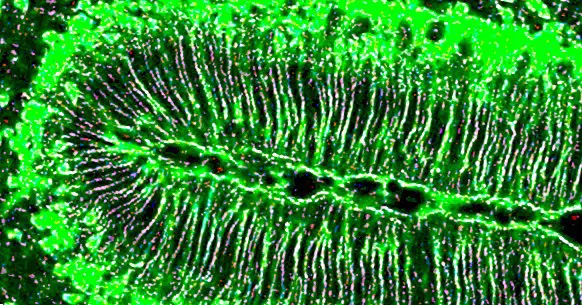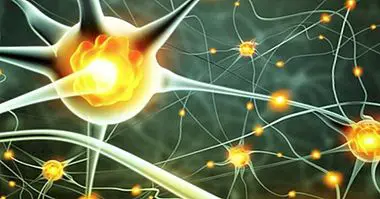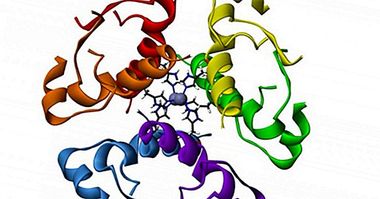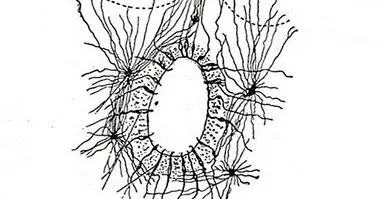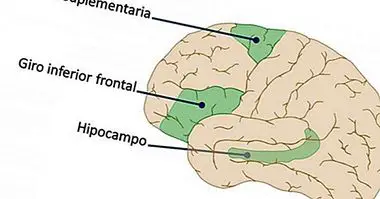Radial glia: what is it and what functions does it have in the brain?
Thinking about the brain or the nervous system in general is equivalent to thinking about neurons. And it is that the neuron is the basic unit of the nervous system, which is why we usually focus on them when we are exploring the functioning of this system. But in the brain there are not only neurons. We can also find glial cells, which sustain, protect and keep neurons alive. Among the multiple types of glial cells that we can find, in this article let's focus on the so-called radial glia , essential element for our development.
- Related article: "Glial cells: much more than the glue of neurons"
What are glial cells?
We understand glial or glial cells to that set of cells derived from the embryonic epithelium that line the nervous system and form a network of support, protection, nutrition and maintenance of neurons. Initially it was believed that they were a substance that only kept the neurons together, although this hypothesis was rejected after the discovery of the existence of the synapses.
Its functions are multiple: besides contributing to provide a structure to the nervous system, it has been observed that it is glial cells that put neurons in interaction with the cells of the cerebrovascular system, acting as a filter. This makes the glia can provide nutrients and oxygen to neurons , something that refers to one of its main and most important roles: to provide nutrients and keep the nervous system alive. A final and particularly relevant role of this type of cells is the fact that they eliminate waste and maintain a stability in the medium in which the neurons are located.
But although they were traditionally considered primarily as supporters, recent research suggests that they are capable of both capturing and releasing information-transmitting substances with a possible influence on synaptic transmission that occurs between neurons. Thus, they have an effect on the processing of information beyond mere neuronal sustenance.
Glial cells are fundamental for the proper functioning and survival of the nervous system. But the term glia includes a large number of cell types. Among them we can find astrocytes, oligodendrocytes, Schwann cells or the one that occupies us in this article, the radial glia.
Radial glial: basic elements
As regards the radial glia, we are facing a type of glial cell of generally bipolar morphology that extends throughout the cerebral cortex and cerebellar (although in the latter case there are more elongations, being multipolar). These are cells that serve as a structural pillar and contribute to the development of the nervous system.
They have often been linked to another type of glial cell, the astrocytes, because they play typical roles of this type of glial cell and that like these they have similar cytoskeletal and membrane proteins (possessing, among other glutamate receptors or GABA). In fact, radial glia can develop or develop into these.
The radial glia, also called aldainoglyca, is known primarily for serving as path or guide for neurons during fetal development . This guide is produced due to the interaction of glia and neuron, through a process of attraction at the chemical level and the role of the glia when promoting the growth and migration of nerve fibers.
However, this role is reduced over time: once the neurons of the cortex have migrated to their final position and once new neurons stop being born in most areas of the nervous system, their role goes to Focus on supporting the neural network.
- You may be interested: "Parts of the human brain (and functions)"
Its most important and known functions
The radial glia fulfills different roles within the organism, but the most prominent, investigated and known of them all we have mentioned before: it is the type of cell that allows and acts as a guide neurons during neuronal migration , allowing them to reach the positions that pertocan them.
This process is especially visible during fetal development, seeing how newly formed neurons travel through the glial cells, using them as a guide to the cortex. Although it is not the only method of neuronal migration available, it is the best known and most popular method, especially with regard to the cerebral cortex.
In addition to this guide and transport function, the radial glia it has also been related to the generation itself and neuronal synthesis : it has been observed that they can act as progenitors of other cells such as neurons. This neurogenesis is especially linked to childhood, but its involvement in the birth of new nerve cells in the adult brain is suspected in the few areas where it has been detected (in the hippocampus and in the olfactory bulb it is where most has been observed ). Likewise, they have been related to the recovery of some functions after the presence of brain lesions, and their connection with processes such as synaptic and neuronal pruning that occurs during growth has been observed.
It has been seen that glial cells also have a very important role when it comes to generating a complex cerebrovascular network , functional and stable in the brain, especially at the beginning of life but also throughout the life cycle. In experiments with mice it was observed that its inhibition generates a degradation of the cerebral vascularization network and brain metabolism, something that greatly facilitates the appearance of neurodegeneration (something that in fact is discussed about its involvement in diseases such as Alzheimer's) .
Finally, it should be mentioned that like the rest of glial cells, the radial glia also has as an important role to sustain and keep alive the neurons that surround them, facilitating their growth and nourishing them.
Bibliographic references
- Allen, N. J. and B. A. Barres (2009). Glia - more than just brain glue. Nature, 457: 675-677.
- Malatesta, P. & Götz, M. (2013). Radial glia: from boring cables to stem cell stars. Developments, 140: 483-486. The Company of Biologists Ltd.
- Rakic, P. (1972). Mode of cell migration to the superficial layers of fetal monkey neocortex. Journal of Compared Neurology, 145: 61-83.

